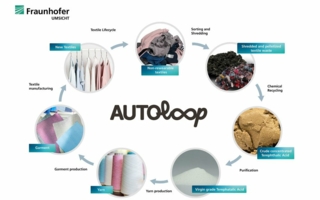31/10/2023 – Bremen Cotton Exchange — auf Deutsch lesen
Cotton demand continues to slip
The issuo No. 39/40 of the Bremen Cotton Report has been published. The report gives an overview of how cotton can be composted, cotton crop in Greece and an overview of the situation on the international cotton market with detailed information on developments and trends. Here is a quick summary:
Composting cotton
Cotton, a natural fiber, offers a significant advantage over synthetic materials like polyester due to its biodegradability. The conditions necessary to fully exploit this advantage are explored below, focusing on composting cotton textiles to enhance cotton cultivation. Composting involves breaking down natural materials with bacteria and oxygen, stabilizing carbon, and improving soil structure, water retention, and nutrient content. This results in healthier plants and higher crop yields. It`s crucial to distinguish between biodegradable and compostable materials, with the latter meeting stricter decomposition standards. Mixing cotton waste with other organic materials creates an ideal environment for microorganisms to transform components into humus, benefiting soil health. Recycling cotton waste through composting diverts textiles from landfills, reducing waste, promoting resource efficiency, and lowering methane emissions. However, cotton textile composting faces logistical challenges, cost concerns, and the need to ensure cotton waste is free from synthetic contamination. Education and infrastructure development are essential to fully unlock the potential of cotton textile composting, aiding soil health improvement and reducing the reliance on synthetic fertilizers while decreasing greenhouse gas emissions. Compostable cotton textiles offer the textile industry an opportunity to embrace sustainability more comprehensively.
(Source: Cotton Incorporated, Cotton Today)
Greece: cotton crop inundated
Greece is facing a significant decline in cotton production for the 2023/24 season, with the USDA forecasting a yield of 240,000 tonnes. This represents an 18% drop from the previous month and a substantial 26% decrease from the previous year, with the crop also falling 27% below the 5-year average. The yield is expected to be 1,109 kg/ha, down 6% from the previous month. The adverse conditions are attributed to torrential rainstorm Daniel, which caused widespread flooding in the primary cotton region in central Greece. The delayed crop stage and excessive rain pose quality and yield issues, significantly impacting cotton production.
(Source: USDA/FAS, World Agricultural Production, September 2023)
Cotton demand continues to slip
Global cotton production for 2023/24 is expected to reach 24.98 m tonnes, as projected by the ICAC. However, cotton consumption is showing a modest decrease, with estimates at 23.31 m tonnes, representing a 0.59% decline compared to the previous season. This drop in demand is attributed to weakening global economic growth, trade barriers, recession concerns, and inflation. Revised consumption estimates down from the season`s beginning, and future growth depends on resolving trade conflicts and increasing confidence for investment. Despite reduced consumption, exports are reporting growth of 14.75%. In Asia, cotton consumption is expected to grow modestly, with East Asian economies leading the way. China`s consumption is decreasing, while India`s remains stable at 5 m tonnes. However, other major importing countries, such as Bangladesh, are said to experience a significant slowdown in consumption growth.
(Source: ICAC, Cotton this Month, 10/2023)
For more detailed information please see Bremen Cotton Exchange – Report No. 39-40/2023, Bremen Cotton Report.




